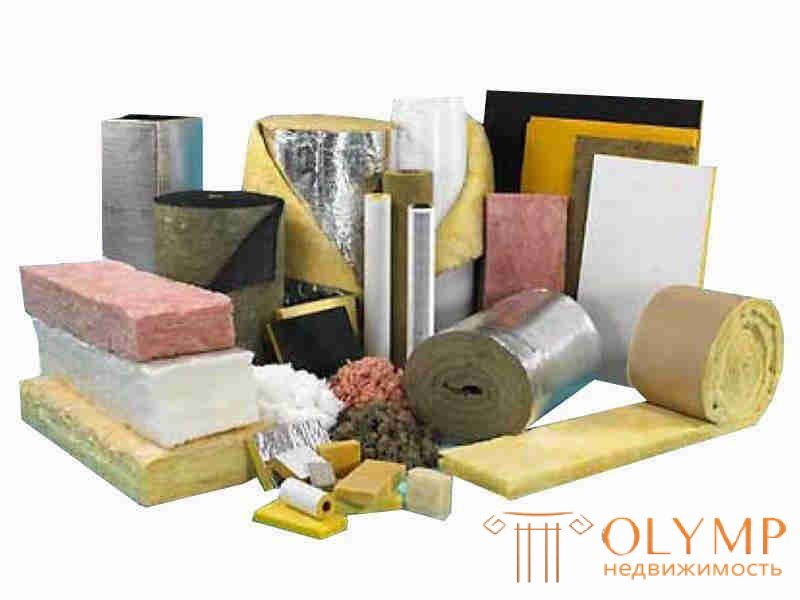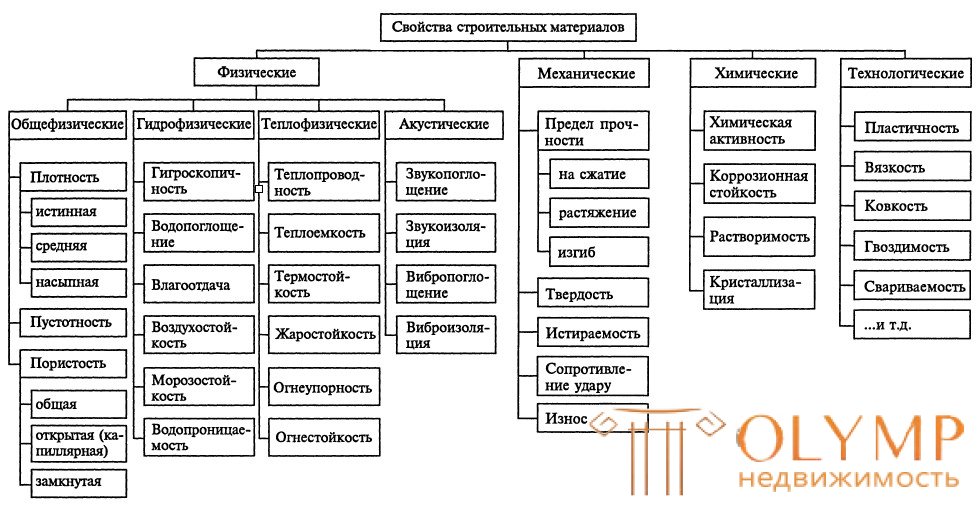

1. By origin:
- natural (stone, wood);
- artificial (ceramics, concrete, polymers, etc.).
2. Composition:
- organic (wood, polymers, biocomposites);
- inorganic, which are divided into metal (metals and alloys) and mineral (glass, mineral wool, ceramics, mortars and concrete on mineral binders, etc.). Inorganic also includes the compound of metal and mineral - reinforced concrete;
- organo-mineral (mixed) - these are concrete polymers, polymer cement concretes, mortars and concretes on organic binders (asphalt concrete), wood-based products, mineral wool plates, etc. 3. According to the production principle (method of structure formation) for artificial: - fused materials and products obtained by complete melting of the starting raw material when melting (cooked) in which the material structure is formed by using the phenomenon of thermoplasticity (properties of the substance to soften, melt when heated and the transition be in the solid state with cooling, and this transition is reversible). Fused materials can be divided into metal (metals) and materials from mineral melts, which include glass, glass, mineral wool;
- firing materials obtained by partial melting of the raw material during firing, also using the phenomenon of thermoplasticity : ceramics, inorganic (mineral) binders;
- materials based on inorganic binders , in which the homonolation, solid-state condition is ensured due to the solidification of the mineral binder, which occurs using the phenomenon of crystallization as a result of the development of successive processes of dissolving the particles of the binder, thickening the solution, i.e. condensation and the formation of nuclei of crystals as a result of this, their growth, contact and growth into ensembles (intergrowths). The varieties are hydrated, on the basis of which solutions and concrete are obtained on the basis of gypsum, lime and cement binders, synthetic (silicate concretes) and a contact condensation mechanism of hardening.
- materials based on organic binders , solid, monolithic state of which is ensured by the solidification of organic binders, which occurs using various mechanisms that sometimes work simultaneously: the already known thermoplasticity (materials based on bituminous and tar binder), polycondensation and polymerization , when the initial monomer forms structure and assumes a solid state by the spatial crosslinking of macromolecules (polymers, polymer concrete, fiberboard, particleboard, plywood, mineral wool, etc.), FSSS btsii in a monomolecular layer on a solid substrate (asphalt). - biocomposites , using biogenic phenomena. Nature uses biotechnology, i.e. biological processes of structure formation billions of years (bone, eggshell, shell limestone, wood, sandstone, ore, etc.).
In addition to these, the technology also uses physical phenomena of friction, mechanical engagement and interparticle interaction (loose grain, powder, fibrous materials) and the phenomena of capillary tension of particles and their interparticle interaction (raw brick, adobe, terrablock). friction and mechanical engagement).
4. By macrostructure
- fused, representing a solid dense body in which the components are indistinguishable with the naked eye (glass, metals, polymers);
- porous , in which the continuous (solid) matrix (solid-phase skeleton) is saturated with pores, small (porous - ceramics, porous concrete) or large (cellular concrete, foam ceramics). Characterized by porosity, its volume, type and structure;
- conglomerate, representing granular or fibrous particles visible to the eye, homogeneous monolithic binder (matrix). Differ chaotic (random) arrangement of particles in the volume of the material. They are characterized by the granulometric composition of the inclusions (fine-grained and coarse-grained, small-fibrous and coarse-grained), the ratio of the volume of the matrix and the inclusions (mortars, concrete, mineral wool, fiberboard, particle board);
- fibrous , in which the fibers are strictly aligned and can be glued together (wood), and can be connected (intertwined) with each other and without a matrix (fiberglass canvas);
- layered : they consist of plates glued together (bodies, in which two geometrical sizes far exceed the third, examples are plywood, wood-laminated plastic). These are composites with an absolutely ordered structure, characterized by the thickness and directionality of the layers, which, as a rule, have a fibrous structure;
- loose grain (sand, crushed stone, binders, etc.): they are a collection of particles of a granular form (that is, when all three dimensions are of the same order). Particles are not bonded by anything except friction forces. Examples of structures: soils, road foundations, embankments, dams, etc. Characterized by particle size distribution, specific surface area and voidness;
- loose fiber (lumpy mineral wool): a set of particles in the form of fibers (one of the overall dimensions of the inclusions is much larger than the other two), also interconnected by friction and engagement forces. They are characterized by bulk density, overall dimensions of fibers, hollowness;
If a binder (matrix) is introduced into the loose grain or loose fiber materials, a conglomerate structure is obtained.
5. By appointment:
structural materials are materials of a universal type, suitable for bearing structures (stone, concrete, mortars, ceramics, glass, metal, metals, structural plastics, forest materials, etc.).
special purpose - building materials needed to protect structures from harmful environmental influences, as well as to improve the operational properties of buildings and create comfort. These include:
- insulating (heat insulating, waterproofing, sealing, sound insulating (acoustic) materials);
- roofing;
- finishing;
- anti-corrosion, etc.

Что бы оставить комментарий войдите
Комментарии (0)